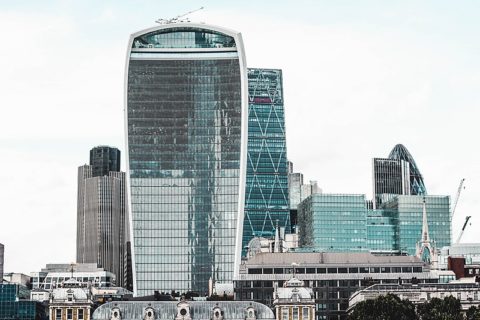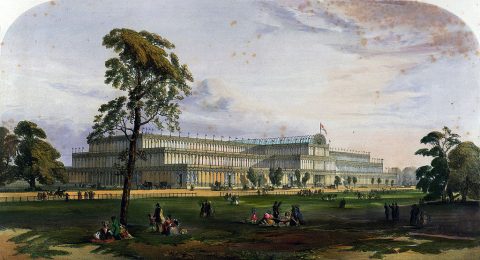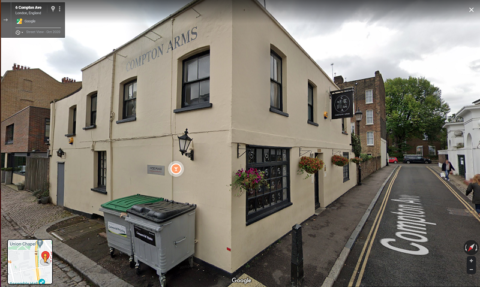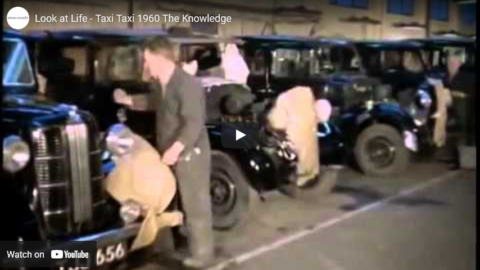Professor of Rock
Published 16 Jun 2021The story of the 1979 classic “Sultans of Swing” by Dire Straits. Mark Knopfler was inspired to write the song after witnessing a band playing Dixieland Jazz in a dive bar.
Hey music junkies and vinyl junkies Professor of Rock always here to celebrate the greatest artists and the greatest 70s vinyl songs of all time for the music community and vinyl community.
If you’ve ever owned records, cassettes and CD’s at different times in you life or still do this is your place Subscribe below right now to be a part of our daily celebration of the rock era with exclusive stories from straight from the artists and click on our patreon link in the description to see our brand new show there.
Mark Knopfler was performing in London’s pub scene in the mid 70s, living on next to nothing in a flat with aspiring bassist John Illsley. Knopfler’s younger brother, David, introduced him to Illsley, following the dissolution of Mark’s first marriage. Mark, John, and David teamed up with “Pick” Withers, another London area musician, to form a group they aptly named Dire Straits.
The 4 members all had day jobs, but they lived a “hand to mouth” existence — struggling to pay their utilities bill. One rainy evening, Mark & a few friends decided to go to a nearby pub for a couple of pints in a dilapidated (dih-lap-ih-dated) section of South London. The pub was nearly empty, except for a couple of guys playing pool. In a corner of the bar, a band was playing — seemingly unaffected by the lack of an audience.
The band was “blowing Dixie — double-four time” as Knopfler would later transcribe. “Dixie double” is a performance style that was popularized by Django (jang-go) Reinhardt (rain-hart), and in the early days of Les Paul — where the guitar, bass, and drums are played harmoniously at a very fast pace.
If you’re playing “Dixie double-four time” as Knopfler describes in “Sultans of Swing”, you are playing twice the speed of the normal 4/4 time, and the drummer is working extra hard to keep up with the tempo. Knopfler remembered asking the hapless Dixie outfit to play “Creole Love Call” or “Muskrat Ramble”, much to the band’s delight, because they were undoubtedly shocked that someone in the pub actually knew some of the songs in their repertoire.
At the end of the band’s performance, the leader announced triumphantly to the 3-4 people in attendance … “We are the Sultans of Swing!”, as if they were playing in front of a packed house of ardent fans. Mark found the irony of the scene very amusing; a frumpy looking band playing a hole in the wall pub in a dodgy part of town, declaring themselves “the sultans of swing”.
To be a “sultan” would be to rule over a country, or hold a dynasty over people. The term originated from the Arabic language meaning to have “authority” or “rulership” over others. The true “Sultans of Swing” would’ve been the “swing” genre’s originator Fletcher “Smack” Henderson in the late 20s & 30s, or one of his revered disciples, Duke Ellington & Benny Goodman.
Babe Ruth and the Yankees legendary murderers row of the 20s if you’re talking baseball.
(more…)
October 5, 2022
The Amusing Inspiration Behind Dire Straits Classic 70s Hit | Professor of Rock
September 1, 2022
QotD: The origins of the Bloody Mary
“Yes, yes please dear boy. You can prepare me a small rhesus negative Bloody Mary. And you must tell me all the news. I haven’t seen you since you finished your last film.” Uncle Monty, the lubricious booby in Bruce Robinson’s wonderful Withnail & I, selects his pre-prandial from a drinks table pregnant with possibilities with all the care one would expect from a seasoned practitioner. And so he might. For a Bloody Mary is perfect at almost any time of day and in every kind of weather.
All the best bars serve Bloody Marys. But the best Bloody Mary is served in The Grenadier, the one-time officers’ mess of the Foot Guards and the long-time public house in Wilton Row, Belgravia. Pass beneath the low lintel of this tiny tavern, pick your way through the crowded tap room and press up against the burr mahogany bar to order the world’s premier pick-me-up.
[…]
The Grenadier is rightly proud of its reputation for restorative remedies and particularly this one. Into the glass go vodka, and a sizeable slug (preferably Stolichnaya), a stirrup of sherry (the secret weapon), tomato juice, then spices (Tabasco and Worcestershire sauce), citron (lemon or lime) and salt to personal taste. The addition of a celery stick is entirely superfluous but for those in search of their hair of the dog, a little light salad I suppose is a help — of sorts.
Yet this pub, though an historic watering hole, cannot claim to be the home of the Mary. That right is retained across the Channel in Paris by Harry’s New York Bar. There exactly a century ago in the City of Light, Fernand Petiot, perfected his “bucket of blood”. The name was soon changed to something a little less Madame la Guillotine and the Mary as we know it was born.
Christopher Pincher, “Hail Mary”, The Critic, 2022-05-30.
August 24, 2022
“A spectre is haunting Britain – the spectre of whingers”
A pub that was partially an inspiration for George Orwell’s description of the “perfect pub” is under threat from post-covid NIMBY complaints:
George Orwell’s favourite pub could be closed down because four neighbours have moaned about the noise.
A spectre is haunting Britain – the spectre of whingers. The dead hand of NIMBYism is felt on so many of our national crises, from the housing crisis to the “drought” to the energy crisis. The comfortably off classes have fought tooth and nail, all too successfully, in recent decades to block the building of anything – from houses to reservoirs – that might make life easier for everyone else. But their killjoy war on pubs might just be their most grating accomplishment.
The Compton Arms in Islington is the latest pub, still struggling in the wake of lockdown and now faced with soaring energy costs, to be threatened with closure over a handful of complaints. It’s been open since the 1800s. George Orwell drank there and it reportedly inspired his essay “The Moon Under Water”, published in the Evening Standard in 1946, which laid out his idea of the perfect pub. Now it has been slapped with a licence review by the local council after four neighbours complained that it was a “public nuisance” and posed a danger to health.
Given the Compton Arms was just voted the second-best pub in the UK by Time Out, with a review that hails its “seasonally led” “small-plates menu”, it seems unlikely to have become some den of criminal depravity. The furious explanation of Nick Stephens, the pub’s owner, seems more plausible – that some killjoys on this well-to-do Highbury side street got used to the pub being shut during lockdown and are now throwing their toys out of the pram.
“Our managers have gone to extreme lengths and worked their socks off to run the pub considerately (and exceptionally) – in spite of some more than challenging behaviour from some of the four complainants”, Stephens posted on Facebook. “A minority get used to the quiet then decide the pub that’s been there since the 1800s, that is an asset of community value, is now a nuisance.” He says that if this “minority of four” succeeds, the Compton won’t be financially viable “for us … or any other responsible operator”.
This is a story we have seen playing out time and again across the UK. An unholy alliance of whingers and council bureaucrats are shutting down and imposing punishing restrictions on much-loved pubs, stopping them from staying open later or blocking the opening of new venues over often ludicrous claims of noise and disruption. There seems to have been a particular flurry of this in recent months, following the end of lockdown and the entrenchment of working from home.
August 15, 2022
Look at Life – Goodbye, Picadilly (1967)
nostalgoteket
Published 1 Sep 2011U.K. Newsreel. A look at the Piccadilly Circus of the Swinging Sixties! A lot of what is shown here no longer exists as it was soon “modernized” to meet the demands of a changing world. Also a look at underground Piccadilly to see sights that few people have ever seen.
July 11, 2022
British Transport Films: Elizabethan Express (1954)
mikeknell
Published 6 May 2014This 1954 documentary is uploaded in a couple of places, but here it is without breaks and in the correct aspect ratio. One of the classic railway films.
June 2, 2022
For Queen and Country (2010)
emptyangel
Published 14 Jun 2011“Documentary following the Grenadier Guards as they prepare to lead the 2010 Trooping the Colour. But these men have had precious little time to prepare; as fighting soldiers, they have just spent six months on the front line in Afghanistan’s Helmand Province. This is the story of how one and a half thousand men and women join together to create one of the greatest military ceremonies on earth. It is a ceremony with just one standard: Excellence.”
May 25, 2022
British lack-of-flair in naming things
Ed West wonders why the Brits come up with such boring names for, well, everything:

A detail from the Mapping London Tube Zones map – https://mappinglondon.co.uk/2021/tube-zones/
Back in the 1850s, when London was getting its first proper government, the authorities had a problem with street names – they were just so boring that it was actually confusing.
According to Judith Flanders’s The Victorian City: “In 1853, London had twenty-five Victoria Streets, thirty-seven King and twenty-seven Queen Streets, twenty-two Princes, seventeen Dukes, thirty-four Yorks and twenty-three Gloucesters – and that was without counting the similarly named Places, Roads, Squares, Courts, Alleys or Mews, or even the many synonyms that designated squalid backcourts: Rents, Rows, Gardens, Places, Buildings, Lanes, Yards and Walks. One parish alone had half a dozen George Streets.”
Bearing in mind how small London was at the time, no more than zone 1 and bits of zone 2, it’s quite impressive that they managed to have so many Victoria Streets. Impressive, and obviously stupid. The Metropolitan Board of Works forced parishes to rename duplicates; but even as the capital expanded, borough councils continued the practice, so that dozens of new Victoria roads and streets were created (many of which have since been changed).
Perhaps it reflects a deeply content and loyal public, but it’s more a testimony to how dull and unimaginative the British are about naming things. And it’s a fine tradition we continue today with the Elizabeth Line.
[…]
Although the new Elizabethans are in many ways the anti-Victorians – declinist, slow to get things built, filled with civilisational self-hatred – in our naming patterns we are recognisably the same people.
A few years back, when Britain launched its biggest ever warship, weighing in at 65,000 tons, they named it HMS Queen Elizabeth. This came after it was decided we needed a new name for our part of Antarctica – with huge originality, they went for “Queen Elizabeth Land”. Even Big Ben was renamed the Queen Elizabeth Tower in 2012.
The Queen, bizarrely, has twenty hospitals named after her, which led to a small revolt when the South Glasgow University Hospital became the latest. Considering how many brilliant scientists Scotland has produced, you might think they could have found someone else. Alexander Fleming, one of the alternatives suggested, grew up not far away in Ayrshire and saved literally hundreds of millions of lives.
Edward Jenner, meanwhile, has the Viale Edoardo Jenner in Milan named in his honour, and a town in Pennsylvania. While there is a Jenner Road in Stoke Newington, you wouldn’t necessarily know it was in tribute to the man who discovered vaccinations. That is because, when we honour someone with a street, the British shyly only feature their surname; the only time we follow the continental pattern of including the full name is, bizarrely, with local councillors. The people who run local government in Britain are not against honouring heroes in theory, they just think the real heroes aren’t explorers, scientists or military leaders, but the people who run local government.
May 7, 2022
“Urban conservative” has become a modern oxymoron
Ed West on the increasingly rare creature known as the city or urban conservative (he’s primarily talking about the UK, but it applies equally well in Canada and the United States):

20 Fenchurch Street in London has been nicknamed the “Walkie-Talkie” due to its distinctive design.
Image by Toa Heftiba via Wikimedia Commons.
It’s largely forgotten now, but political polarisation is written into the very fabric of London. In the 18th century, when rivalries between Whigs and Tories were at their most intense, different West End squares were built so that the two groups could live among their own kind.
Hanover Square in Mayfair was built for Whigs to live cosily while, further south, St James’s Square was a home for Tories. This was close to the Cocoa Tree coffee house in Pall Mall, their unofficial meeting place, where in the 20th century workmen found a bolt hole so that they could make a quick escape if the authorities turned up.
At the time the Whigs were the party of London merchants, and the Tories that of the country, where they enjoyed widespread support from the rural population. They had once been seen as dangerously close to the old Jacobite dynasty, hence their fear of being arrested, but as that issue receded their popularity in the country at large become stronger. The Whigs were an out-of-touch metropolitan elite, sipping on their fancy “coffee”, but this didn’t stop them ruling the country for decades, nor shaping its political and historical narrative.
Two or three political realignments later, we have arrived to where we started again. As of today the City of Westminster, home of those fashionable West End squares as well as the seat of government itself, is no longer controlled by the Conservatives, as seismic an event in the great realignment as the loss of Kensington was in the 2017 election.
In fact the whole of London is emptying of Conservatives, the party losing Wandsworth and holding onto just three boroughs. It’s not just London: the Tories have no councillors in most large cities now.
As with many social patterns, in this we are following the United States, where Bill Bishop coined the phrase “The Big Sort” to describe how Americans were becoming more polarised by geography, and which Will Wilkinson described as the formation of “communities of psychologically/ideologically similar people”.
This has resulted in cities becoming one-party enclaves, as progressive values become the norm, and conservative-minded people leave. My own parliamentary constituency, in north London, was from its formation in 1983 a suburban Tory seat but shifted between three different parties during the 80s and 90s; at the last election Labour had a 20,000 majority. Labour has now run my borough, Haringey, for 51 years, and the last time the Tories won it, back in 1968, they also took Hackney, Lambeth, Lewisham and in total 28 of London’s 32 boroughs. Truly a different world. Today they do not even fully-field candidates in some wards.
May 1, 2022
The Victorian-era “guarantee fund” model for risky enterprises
In the latest Age of Inventions newsletter, Anton Howes wonders why we don’t have a modern equivalent to the funding mechanism that helped create the Great Exhibition of 1851 and other events that provided benefits to the public without government backing:

The Crystal Palace from the northeast during the Great Exhibition of 1851.
Image from the 1852 book Dickinsons’ comprehensive pictures of the Great Exhibition of 1851 via Wikimedia Commons.
As I’ve mentioned before, exhibitions of industry were not just celebrations of technological progress, but could become engines for progress as well. For the inventors, artists, and engineers who exhibited, the events were a direct inducement to improvement. And for the public who visited, the events exposed them to what was possible, encouraging them to raise their demands as both consumers and citizens, ideally inspiring them to become future innovators too.
But how was it all paid for? Unlike its national-level precursors in France, the Great Exhibition was not a state-run event. Even more remarkably, its organisers also failed to raise anywhere near enough private subscriptions to cover their costs. Instead, they used something that called a “guarantee fund”.
Instead of asking for donations from supporters up-front, the organisers asked them to commit to covering the exhibitions potential losses up to certain amounts — to be paid only if the money was required. Based on the security provided by this crowdsourced guarantee fund, the organisers then raised an ordinary bank loan in order to get the cash they needed to actually hold the event. Crucially, the guarantors didn’t actually have to spend anything unless the event made a loss, and if the event broke even or even made a surplus thanks to ticket fees, then they would never spend a penny at all. (Luckily for them, that’s exactly what happened in 1851, and for many later exhibitions too.)
What’s interesting to me about the guarantee fund is that I can’t quite think of anything quite like it today. There are perhaps more individualised versions of it, like when a neighbour or friend acts as a guarantor for a mortgage. And governments sometimes provide guarantees for certain sectors or industries too. There have also been a few profit-making versions of it in certain industries, where the guarantors potentially get some share of the upside too (“Names” at the Lloyds of London insurance and reinsurance market sounds similar, though even these are disappearing). But I’ve not seen anything like what the Victorians did, essentially using a guarantee fund to leverage philanthropy.
This is surprising to me. It seems like it has a lot of major advantages, especially for those who might want to replicate the exhibitions of industry today, or indeed for any kind of capital-intensive philanthropic endeavour that could eventually be expected in some measure to pay for itself. (I can’t help but think it would be useful in efforts to speed up the de-carbonisation of the economy, for example — a potential application that I’ve been exploring in my conversations with the people at Carbon Upcycling.)
Consider that with a guarantee fund anyone able to afford the risk could considerably increase the philanthropic value of their assets. Say that you could afford to donate £100 right away, but could donate three times that amount at a pinch (e.g. by having to liquidate some funds in shares). You could thus guarantee £100 each to three different causes, potentially without ever actually having to donate it, and knowing that in the worst case scenario you would never have to spend more than the £300 you can afford.
After all, those signing up to the guarantee fund essentially chose what their maximum liability would be if the event were to make a loss. If they were confident in the event’s success, then they probably believed that they would not have to pay anything at all. And if not, they had at least named the maximum donation they might eventually be asked to give.
April 7, 2022
Look at Life – Taxi Taxi – The Knowledge (1960)
April 5, 2022
Tower Bridge Fighter Jet Incident | Tales From the Bottle
Qxir
Published 26 Nov 2021This jet pilot decided to stage a protest in the skies of London, but his actions became more well known for an incident that occurred on his journey home.
“The Hawker Hunter Tower Bridge incident occurred on 5 April 1968 when Royal Air Force (RAF) Hawker Hunter pilot Alan Pollock performed unauthorised low flying over several London landmarks and then flew through the span of Tower Bridge on the Thames. His actions were to mark the 50th anniversary of the founding of the RAF and as a demonstration against the Ministry of Defence for not recognising it.
Upon landing he was arrested and later invalided out of the RAF on medical grounds, which avoided a court martial.”
More on Wikipedia:
https://en.wikipedia.org/wiki/Hawker_…Merch: teespring.com/stores/qxir
Patreon: https://www.patreon.com/qxir
Twitter: https://twitter.com/QxirYT
Discord: https://discord.gg/jZzvvwJ
Twitch: https://www.twitch.tv/qxiryt/
Subreddit: https://www.reddit.com/r/Qxir/
From the comments:
Qxir
3 weeks ago (edited)
Yes, I know it’s pronounced “Tems” lol
April 3, 2022
King James I and the problem of gold and silver thread in England
In the latest Age of Invention newsletter, Anton Howes began to research what appeared to be a minor economic issue that very quickly took over his time going deep down the gold and silver market rabbit hole:

A hammered silver sixpence of James I dated 1603 from the first coinage with a thistle mintmark. Obverse features a right facing crowned bust with the numerals VI behind and the inscription JACOBVS*DG*ANG*SCO*FRA*ET*HIB*REX. The reverse has a shield with the royal arms and the date 1603 above. The reverse inscription is EXERGAT* DEVS*DISSIPENTVR*INIMICI.
FindID 510696 – https://finds.org.uk via Wikimedia Commons
When England’s Parliament met in 1621, it was mainly supposed to vote King James I the funds to fight a war. His daughter’s domain, the Palatinate of the Rhine, had just been invaded, and the European Protestant cause was under grave threat. As I set out two weeks ago, however, the House of Commons had seized the chance to pursue a scandal. Jealous of the Crown’s challenge to their status as local power-brokers, and hoping to embarrass the king’s favourite, the Marquess of Buckingham, MPs opened an investigation into Sir Giles Mompesson’s patent to license inns.
When it came to inns, I argued that the case against Mompesson was flimsy (making me perhaps the only person to have defended him for over four hundred years). He appears to have been a trusted and able bureaucrat, the source of his downfall being his sheer effectiveness. But the flimsiness of the case against him was not enough to stop the political witch-hunt. Next on the list was a project he had administered for making gold and silver thread.
It sounds obscure, and I was fully expecting to write up a short overview of a niche industry that just happened to be thrust into the limelight of 1620s politics. That was a month ago, when I first started drafting this piece. But pulling on the golden thread revealed a desperate, decade-long battle between the City and the Crown, over who would get to control the financial stability of the realm. I’m sorry for the delay in publishing it, but I hope I’ve made it worth the wait.
March 11, 2022
A Life Between Shells and Shelter – On the Homefront 015
World War Two
Published 10 Mar 2022Right from the start of World War Two, there has been little distinction between combatant and civilian. While bombs keep falling, people in Great Britain and in Germany are sitting in bunkers, basements and underground tunnels. We are taking a look at life inside those shelters.
(more…)
February 16, 2022
The railway built for dead passengers – London Necropolis Railway
Train of Thought
Published 29 Oct 2021It’s close to Halloween, so lets have a look at a railway built to transport a very macabre type of cargo … the recently deceased …
Please subscribe for more
This video falls under the fair use act of 1976
If you’re interested in a bit more than is covered in the video, here’s a post from 2013 discussing this railway.
February 5, 2022
City Minutes: The Roman Empire
Overly Sarcastic Productions
Published 4 Feb 2022The funny thing about Empire is that ~*Rome*~ includes far more than just the City of Rome. Spread out across every corner of the Mediterranean — and then some — Roman Civilization was always adapting to local circumstances and changing over time. Today we’ll look at 5 cities that show the diversity of just how much “Rome” could really mean in the days of the empire.
The Great Cities In History by John Julius Norwich, “A Wonder of the World – Ephesus” from The Great Tours: Greece and Turkey, from Athens to Istanbul by John R. Hale, “Ephesus”, “Leptis Magna”, “Roman Britain”, “Pompeii” from World History Encyclopedia https://www.worldhistory.org/ephesos/, https://www.worldhistory.org/Lepcis_Magna, https://www.worldhistory.org/Roman_Britain, https://www.worldhistory.org/pompeii/. “Ephesus”, “Leptis Magna” “London”, “Pompeii” from Britannica https://www.britannica.com/place/Ephesus, https://www.britannica.com/place/Leptis-Magna, https://www.britannica.com/place/Lond…, https://www.britannica.com/place/Pompeii. I also have a degree in Classical Studies.
Chapters:
0:00 — Rome
0:58 — Ephesus
2:00 — Leptis Magna
3:03 — Londinium
4:12 — Pompeii
5:17 — ConclusionOur content is intended for teenage audiences and up.
PATREON: https://www.Patreon.com/OSP
PODCAST: https://overlysarcasticpodcast.transi…
DISCORD: https://discord.gg/osp
MERCH LINKS: http://rdbl.co/osp
OUR WEBSITE: https://www.OverlySarcasticProductions.com
Find us on Twitter https://www.Twitter.com/OSPYouTube
Find us on Reddit https://www.Reddit.com/r/OSP/










